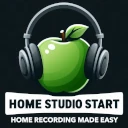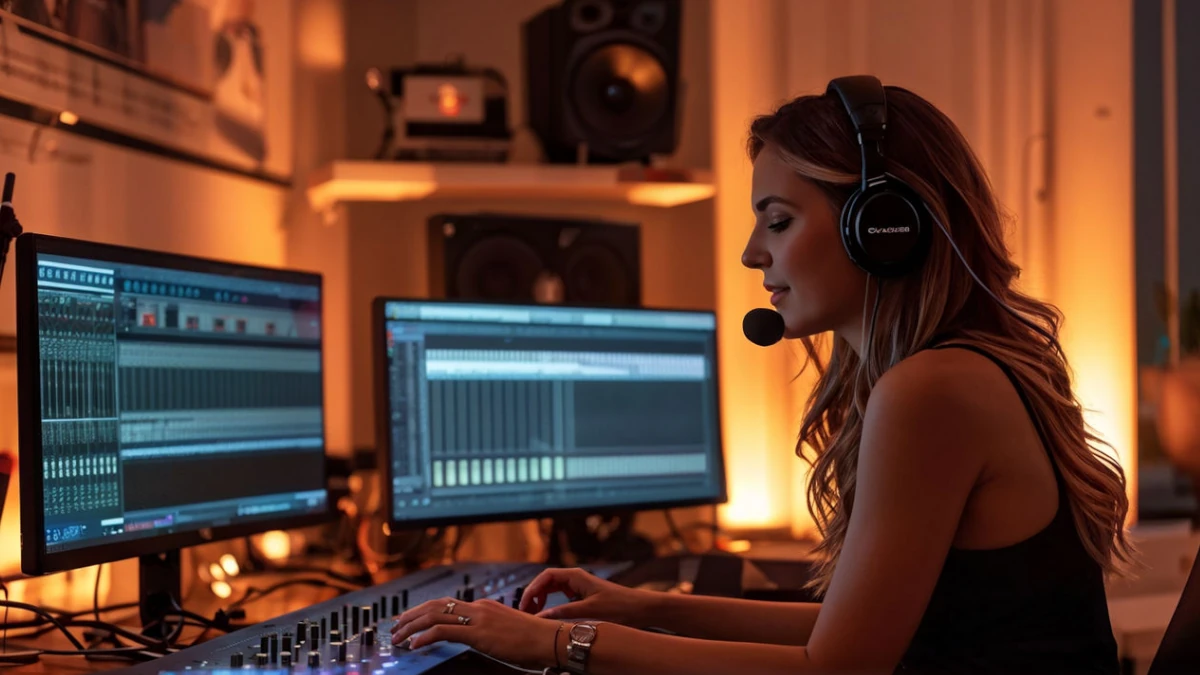When it comes to building a home studio, choosing the right audio interface is a crucial decision that can make or break your recording experience. But before you start browsing through the numerous options available in the market, it’s essential to identify your recording needs. What type of recordings do you plan to make? How many instruments or microphones do you need to connect? What level of sound quality are you aiming for?
Answering these questions will help you determine the specifications you require from an audio interface. For instance, if you’re a singer-songwriter who only records vocals and acoustic guitar, you might not need a high-end interface with multiple inputs. On the other hand, if you’re a music producer who works with multiple musicians and instruments, you’ll need an interface that can handle a higher number of inputs and outputs.
To get started, take a step back and assess your recording goals. What kind of music do you want to produce? Do you need to record live instruments or will you be working with virtual instruments? How important is sound quality to you? Are you looking for a professional-grade recording or just something to get started with?
If you’re new to home recording, it’s a good idea to start with the basics. Check out this helpful guide on First Steps on How to Build an Audio Home Studio to get a better understanding of what you need to get started.
By understanding your recording needs, you’ll be able to narrow down your options and choose an audio interface that meets your specific requirements. In the next section, we’ll explore the different types of audio interfaces available in the market, including USB, FireWire, Thunderbolt, and MIDI interfaces.
Types of Audio Interfaces
When it comes to choosing an audio interface, one of the most critical decisions you’ll make is the type of interface that best suits your needs. There are several types of audio interfaces available, each with its own set of pros and cons. In this section, we’ll explore the different types of audio interfaces, helping you determine which one is right for you.
USB Audio Interfaces

USB audio interfaces are one of the most popular types of interfaces available. They’re widely compatible with both Windows and Mac operating systems, making them a great option for musicians who work on different platforms. USB interfaces are also relatively affordable and easy to set up, making them an excellent choice for beginners.
One of the significant advantages of USB audio interfaces is their plug-and-play functionality. Simply connect the interface to your computer, install the necessary drivers, and you’re ready to start recording. Additionally, USB interfaces are bus-powered, meaning they don’t require an external power source.
However, USB interfaces do have some limitations. They can be prone to latency issues, especially if you’re working with high-track counts or low-buffer settings. Additionally, USB interfaces often have limited bandwidth, which can affect the quality of your recordings.
FireWire Audio Interfaces
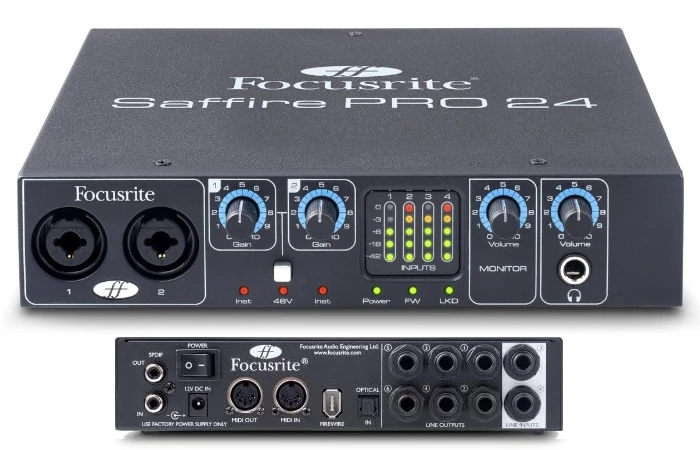
FireWire audio interfaces were once a popular choice among musicians, but they’ve largely been replaced by USB and Thunderbolt interfaces. However, if you’re working with older equipment or prefer the FireWire connection, there are still some great options available.
FireWire interfaces offer faster data transfer rates than USB interfaces, making them better suited for high-track count recordings. They’re also less prone to latency issues, providing a more reliable connection.
However, FireWire interfaces are less compatible with modern computers, and the technology is slowly becoming outdated. Additionally, FireWire interfaces often require an external power source, which can be inconvenient.
Thunderbolt Audio Interfaces
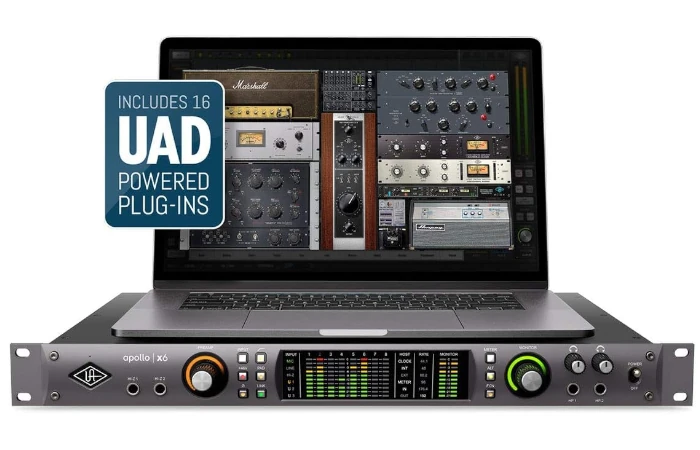
Thunderbolt audio interfaces are the latest innovation in audio interface technology. They offer incredibly fast data transfer rates, making them ideal for high-track count recordings and demanding audio applications.
Thunderbolt interfaces are also highly compatible with modern computers, especially Macs. They’re also relatively low-latency, providing a more reliable connection.
However, Thunderbolt interfaces are often more expensive than USB or FireWire interfaces. They also require a Thunderbolt port on your computer, which may not be available on older machines.
MIDI Audio Interfaces
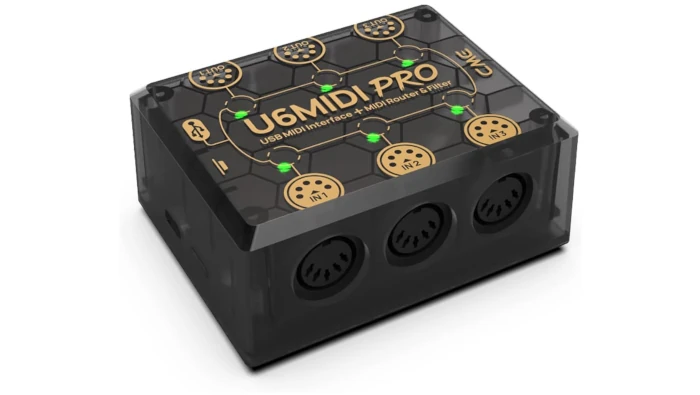
MIDI audio interfaces are a type of interface that focuses solely on MIDI connectivity. They’re ideal for musicians who work with MIDI controllers, synthesizers, or other MIDI-enabled devices.
MIDI interfaces are often compact and portable, making them great for live performances or small studio setups. They’re also relatively affordable and easy to use.
However, MIDI interfaces don’t provide audio connectivity, so you’ll need a separate audio interface for recording audio signals.
By understanding the different types of audio interfaces available, you can make an informed decision about which one best suits your needs. Whether you’re a beginner or a seasoned musician, choosing the right audio interface is crucial for producing high-quality recordings.
Key Features to Consider
When it comes to choosing the right audio interface for your home studio, there are several key features to consider. These features will not only affect the quality of your recordings but also the overall functionality of your setup. In this section, we’ll delve into the essential features to look for in an audio interface.
Number of Inputs and Outputs
The number of inputs and outputs on an audio interface is crucial, as it determines how many instruments or microphones you can connect simultaneously. If you’re a solo artist, a two-input interface might suffice. However, if you’re recording a full band or multiple instruments, you’ll need an interface with more inputs.
For example, if you’re recording a drum kit, you’ll need at least eight inputs to connect all the mics. Some audio interfaces offer expandable inputs, which can be a game-changer for larger recording projects.
Sample Rates and Bit Depths
Sample rates and bit depths are critical components of audio quality. Sample rates refer to the number of times per second that the audio signal is captured, while bit depths determine the resolution of the captured signal.
A higher sample rate and bit depth will result in a more detailed and accurate recording. Common sample rates include 44.1 kHz, 48 kHz, and 96 kHz, while bit depths range from 16-bit to 32-bit.
Latency and Connectivity Options
Latency refers to the delay between the time you play a note and when you hear it through your monitors or headphones. Low latency is essential for real-time monitoring and tracking. Look for an audio interface with low latency, typically around 2-5 ms.
Connectivity options are also vital, as they determine how you connect your interface to your computer or other devices. Common connectivity options include USB, FireWire, Thunderbolt, and MIDI.
Compatibility with Recording Software
Before choosing an audio interface, ensure it’s compatible with your recording software. Popular digital audio workstations (DAWs) like Ableton, Logic Pro, and Pro Tools often have specific interface requirements.
Make sure to check the interface’s compatibility with your preferred DAW to avoid any potential issues.
Other Key Features
In addition to the above features, consider the following when choosing an audio interface:
- Preamp quality: Look for high-quality preamps that can handle a variety of instruments and microphones.
- Phantom power: Ensure the interface provides phantom power for condenser microphones.
- Direct monitoring: This feature allows you to monitor your recordings in real-time, without latency.
- MIDI I/O: If you plan to connect MIDI devices, ensure the interface has MIDI input and output capabilities.
- Bus power: If you plan to use the interface on-the-go, look for one that can be bus-powered via USB.
By considering these key features, you’ll be well on your way to finding the perfect audio interface for your home studio needs.
Budget and Brands
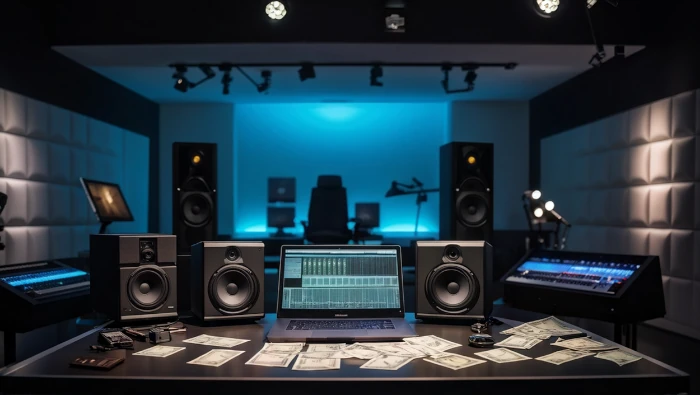
Now that we’ve discussed the importance of identifying your recording needs, exploring the different types of audio interfaces, and considering key features, it’s time to talk about budget and brands. After all, you want to get the best value for your money, right?
Setting a Budget
When it comes to budget, it’s essential to determine how much you’re willing to spend on an audio interface. You can find interfaces ranging from under $100 to over $1,000, so it’s crucial to set a realistic budget before making a purchase.
If you’re just starting out, you may be able to get away with a more budget-friendly option. However, if you’re looking for high-quality sound and advanced features, be prepared to invest a bit more.
Here are some general guidelines to keep in mind:
- Basic audio interfaces with limited features: $100-$300
- Mid-range audio interfaces with decent quality and features: $300-$600
- High-end audio interfaces with advanced features and high-quality sound: $600-$1,000
- Professional-grade audio interfaces with top-notch quality and features: $1,000+
Top Brands in the Audio Interface Market
When it comes to choosing an audio interface, you’ll want to consider reputable brands that offer quality products and good customer support. Here are some top brands to consider:
- Focusrite: Known for their high-quality audio interfaces with great preamps and low latency.
- PreSonus: Offers a range of audio interfaces with advanced features and high-quality sound.
- Native Instruments: Popular among music producers and audio engineers, Native Instruments offers high-end audio interfaces with advanced features.
- Behringer: Provides budget-friendly options with decent quality and features.
- Universal Audio: Known for their high-end audio interfaces with advanced features and exceptional sound quality.
Tips for Getting the Best Value
To get the best value for your money, here are some tips to keep in mind:
- Research, research, research: Read reviews, compare features, and watch tutorials to get a sense of which audio interface is right for you.
- Consider your needs: Think about the type of recordings you’ll be making and the features you need.
- Look for bundles: Some manufacturers offer bundles that include the audio interface, software, and other accessories.
- Check for discounts and promotions: Keep an eye on online retailers and manufacturer websites for discounts and promotions.
- Warranty and customer support: Make sure to choose a brand that offers good customer support and a decent warranty.
By considering your budget and choosing a reputable brand, you’ll be well on your way to finding the perfect audio interface for your home studio. In the next section, we’ll cover some additional considerations to keep in mind when making your decision.
Additional Considerations
When choosing an audio interface, there are several additional factors to consider that can make a significant difference in your recording experience. In this section, we’ll explore some of these key considerations to ensure you make an informed decision.
Size and Portability
One of the most important considerations is the size and portability of the audio interface. If you plan to record on-the-go or in different locations, a compact and lightweight interface is essential. Look for interfaces that are designed to be portable and have a rugged build quality. On the other hand, if you’ll be recording primarily in your home studio, a larger interface with more features may be a better option.
Preamp Quality
The quality of the preamps in your audio interface can greatly impact the sound quality of your recordings. High-quality preamps can provide a warm and clear sound, while low-quality preamps can result in a noisy and distorted sound. Look for interfaces with high-quality preamps that can handle a variety of instruments and microphones.
Customer Support
Another important consideration is the quality of customer support provided by the manufacturer. Look for companies that offer comprehensive documentation, tutorials, and support resources. A good customer support team can be invaluable in helping you troubleshoot issues and get the most out of your audio interface.
Power Requirements
If you plan to use your audio interface on a laptop or in a live performance setting, power requirements are an important consideration. Look for interfaces that are bus-powered, meaning they can draw power from your computer or laptop, eliminating the need for an external power source.
Expansibility
Finally, consider the expansibility of the audio interface. If you plan to expand your home studio in the future, look for interfaces that offer expansion options, such as additional inputs or outputs. This can save you money and hassle in the long run.
By considering these additional factors, you can ensure that you choose an audio interface that meets your specific needs and provides the best possible recording experience. Remember to weigh these considerations against your budget and the key features we discussed earlier.
Link: Unlock Studio Quality Sound: Top Microphones for Recording Vocals at Home
Conclusion and Final Tips
Recap of Key Takeaways
By now, you should have a clear understanding of what to look for when choosing the right audio interface for your home studio. From identifying your recording needs to considering your budget and brand options, we’ve covered the essential factors to ensure you make an informed decision.
Remember, the perfect audio interface for you will depend on your specific requirements, the type of recordings you plan to make, and the quality of sound you’re aiming for. Take your time to research, read reviews, and compare features before making a purchase.
Final Tips for Choosing the Right Audio Interface
To further assist you in your decision-making process, here are some final tips to keep in mind:
- Always check the compatibility of the audio interface with your recording software and operating system.
- Consider the durability and build quality of the device, especially if you plan to use it for live performances or in a busy studio environment.
- Don’t be afraid to ask for advice from fellow musicians, producers, or audio engineers who have experience with audio interfaces.
- Keep an eye on the warranty and customer support offered by the manufacturer, in case you encounter any issues with your device.
- If possible, try before you buy – demo an audio interface before purchasing to get a feel for its performance and usability.
Next Steps
Now that you’re equipped with the knowledge to choose the perfect audio interface, it’s time to take the next step in building your home studio. If you’re still in the process of setting up your studio, be sure to check out our Ultimate Guide to Choosing the Perfect Room for Your Studio Setup.
Good luck with your music-making journey, and happy recording!
